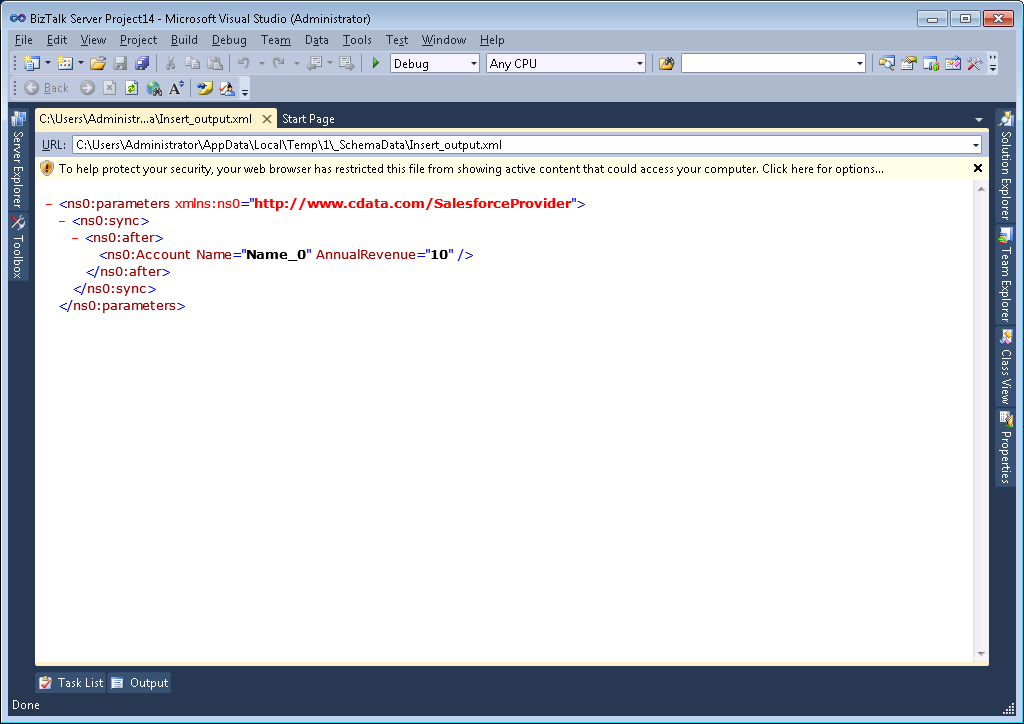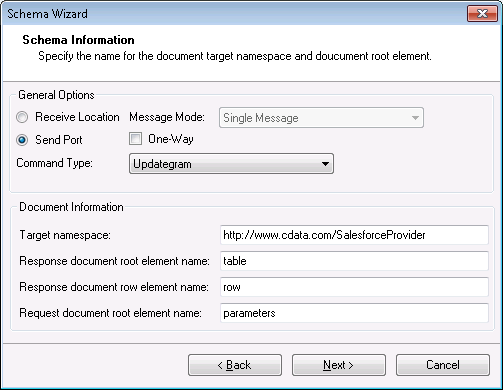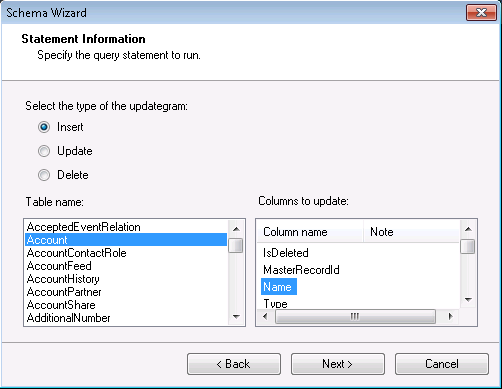Discover how a bimodal integration strategy can address the major data management challenges facing your organization today.
Get the Report →Use Updategrams with Basecamp Data
You can use updategrams to insert, update, and delete Basecamp data. This guide shows how to use the CData BizTalk Adapter for Basecamp to generate updategram schemas and instances.
In this article, you will create updategrams that can be executed by the CData BizTalk Adapter for Basecamp. You will design a schema and use it as a template for generating insert, update, and delete updategrams.
Add the Adapter for Basecamp to Your Project
Use the Add Adapter wizard to add the adapter to a BizTalk Server project in Visual Studio. You will use the adapter to query Basecamp for metadata about the table you want to modify.
- Right-click on the project in the Solution Explorer and click Add -> Add Generated Items.
- Select Add Adapter Metadata in the resulting dialog box.
- In the resulting Add Adapter Wizard, select the CData BizTalk Adapter for Basecamp from the list view.
- In the Port menu, leave the selection blank. Or, select a receive location or send port that has been configured to use the adapter.
- When you click Next, the Schema Wizard is displayed.

Generate a Schema for an Updategram
Follow the steps below to create a schema in a BizTalk Server project in Visual Studio.
- If you have not already done so, add the Basecamp adapter to your project.
- On the Connection String page of the Add Adapter wizard, enter authentication credentials and other connection properties, if they were not already configured in the send port or receive location. Below is a typical connection string:
User=test@northwind.db;Password=test123;Basecamp uses basic or OAuth 2.0 authentication. To use basic authentication you will need the user and password that you use for logging in to Basecamp. To authenticate to Basecamp via OAuth 2.0, you will need to obtain the OAuthClientId, OAuthClientSecret, and CallbackURL connection properties by registering an app with Basecamp.
See the Getting Started section in the help documentation for a connection guide.
Additionally, you will need to specify the AccountId connection property. This can be copied from the URL after you log in.
See the "BizTalk Configuration" chapter in the help documentation for more information on the required connection properties.
![The connection string used by the adapter. (Salesforce is shown.)]()
- On the Schema Information page, click Send Port in the General Options section. Select Updategram from the CommandType menu. If you are using the adapter in a solicit-response send port, disable the One-Way option.
![Schema options that are specific to the adapter configured in a solicit-response send port. (Salesforce is shown.)]()
On the next page, Statement Information, select the type of the updategram: Insert, Update, or Delete. Select the Table name and the columns you want to include in the schema. If you want to update or delete, the Id column is required.
Note: When you create the updategram, you are limited to modifying the columns you include in the schema.
![Schema options that specify the table and columns to be modified. (Salesforce is shown.)]()
- Click Next to view a summary of the schema and finish the wizard to create the schema. The resulting .xsd file is added to your project.

Generate Insert, Update, and Delete Instance Messages
After you create the updategram schema, you can use the .xsd file to generate the updategram: Right-click the .xsd file and select Generate Instance. You can also use this file as a template to manually create updategrams. Below are example generated updategram instances for inserts, updates, and deletes:
Insert
An example of INSERT is below. In this instance, there is only an after block, which specifies how the data will change.
<ns0:parameters xmlns:ns0="http://www.cdata.com/BasecampProvider">
<ns0:sync>
<ns0:before></ns0:before>
<ns0:after>
<ns0:Projects Name="Name_0" DocumentsCount="DocumentsCount_1" />
</ns0:after>
</ns0:sync>
</ns0:parameters>
Update
An example of UPDATE is below. In this instance, there is both a before block (how the data currently exists in the table) and an after block (how the data will change).
<ns0:parameters xmlns:ns0="http://www.cdata.com/BasecampProvider">
<ns0:sync>
<ns0:before>
<ns0:Projects Id=001d000000YBRseAAH></ns0:Projects>
</ns0:before>
<ns0:after>
<ns0:Projects Name="Name_0" DocumentsCount="DocumentsCount_1" ></ns0:Projects>
</ns0:after>
</ns0:sync>
</ns0:parameters>
Delete
An example for DELETE is below. The after block will be empty to show that it is removing the item.
<ns0:parameters xmlns:ns0="http://www.cdata.com/BasecampProvider">
<ns0:sync>
<ns0:before>
<ns0:Projects Id=001d000000YBRseAAH></ns0:Projects>
</ns0:before>
<ns0:after></ns0:after>
</ns0:sync>
</ns0:parameters>
Processing Schemas
To use updategrams to insert, update, or delete Basecamp records, see the tutorial.









